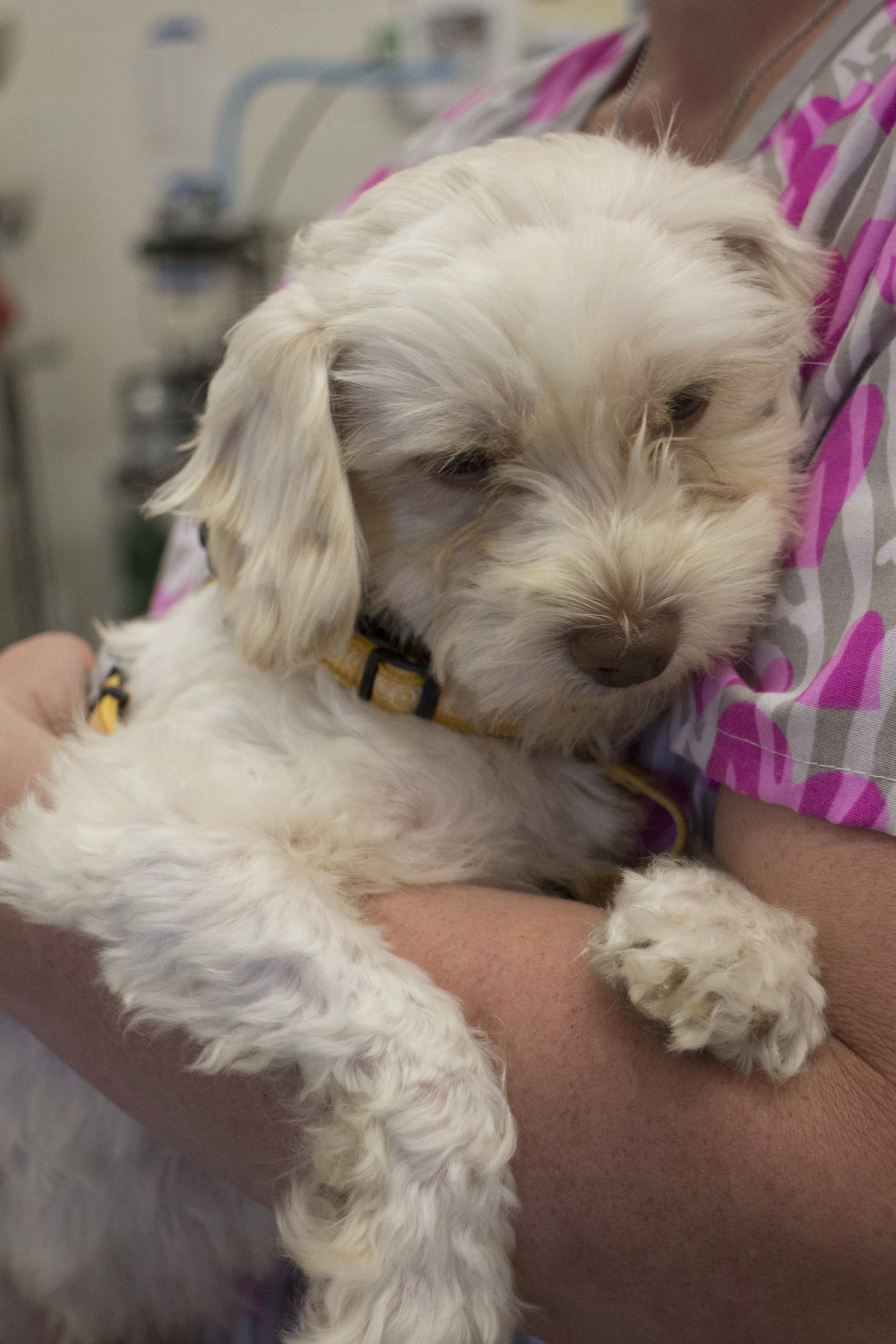dog licking testicles
Spaying and neutering those in your care is an important part of caring for dogs and cats. Overall, you are likely to have a more rewarding and longer relationship with them if they are altered at a young age. Unfortunately, some poor quality studies out of UC Davis have added a level of confusion about the topic. Those who sexually exploit animals for profit are now telling folks not to spay and neuter and citing these studies as proof of their position. This advice can be extremely detrimental not only to the individual, but the population as a whole.
Dogs and Cats Will Likely Live a Longer and Happier Life After Neutering
These studies are flawed, and those of us who take care of animals should be careful when conclusions from this information. Poor information has spread through the media, leading many to express concern regarding spaying and neutering. Media reports claim these studies prove that altering dogs can cause cancer and joint disease.
My goal of this blog post is to help explain to lay folks, the problems with these studies, how the conclusions they have reached could lead to people making choices that could lead deleterious consequences for their those in their care and why it is important to spay and neuter, and what age it should be performed.
The two studies in question are Long-Term Health Effects of Neutering Dogs: Comparison of Labrador Retrievers with Golden Retrievers, authors Hart, B.L et al. and Neutering Dogs: Effects on Joint Disorders and Cancers in Golden Retrievers by Hart, B.L et al. Lead investigator Benjamin Hart, professor emeritus in the School of Veterinary Medicine says “We found in both breeds that neutering before the age of 6 months, which is common practice in the United States, significantly increased the occurrence of joint disorders – especially in the golden retrievers.” The study’s data shows that neutering before the age of 6 months in Labrador Retrievers doubles the rate of joint disorders from 5% to 10% of dogs. And neutering in Golden Retrievers before 6 months of age increased the incidence of joint disorders 4 to 5 times. Hart explains these findings by suggesting “the effects of neutering during the first year of a dog’s life, especially in larger breeds, undoubtedly reflects the vulnerability of their joints to the delayed closure of long-bone growth plates, when neutering removes the gonadal, or sex, hormones”. Undoubtably? He says? Not so fast.
Flawed Research Threatens Animal Health
The major flaw with this study is that it was performed at a teaching hospital. This skews the data quite a bit. Teaching hospitals attract high end clientele that have generally more money to spend on someone in their care, have had the foresight to obtain health insurance, or are generally more closely bonded to those in their care. Teaching hospitals have access to orthopedic surgeons and have the ability to treat CCL (cranial cruciate ligament) tears, hip dysplasia, and elbow dysplasia. These surgeries cost thousands of dollars.
From my own experience as a veterinarian, those with spayed and neutered individuals in their family are generally higher income clients, are more closely bonded to their family members and/or have higher education levels overall. They are more likely to accept my referral to a teaching hospital for surgical treatment of their dog’s orthopedic disease. On the contrary, owners of intact animals are usually lower income, or choose to spend less money on their animal’s veterinary care, are less likely to have pet insurance, and are not as closely bonded to those in their care, possibly due to the animal’s undesirable hormone-influenced behavior. Many of these folks did not even want to pay to have the dog or cat altered in the first place. They are far less likely to accept my referral to a teaching hospital, so these animals would never be counted in this study’s numbers. Very rarely, an intact dog may be a champion show dog or a valuable breeder, but these are a very small percentage of the intact dog population.
The study’s data also shows that spaying female Golden Retrievers at any age over 6 months of age elevated the risk of 1 or more cancers 3-4 times the level of non-spayed females. “The striking effect of neutering in female golden retrievers, compared to male and female Labradors and male goldens, suggests that in female goldens the sex hormones have a protective effect against cancers throughout most of the dog’s life,” Hart said. Again we have the same problem. The teaching hospital is not a true snapshot of the population as a whole. For these numbers to be accurate, we need to look at what general practitioners are seeing in their practices, and even then, we might not get an accurate view, because there are many dogs that never come into contact with a veterinarian, and these are more likely to be intact dogs.
Mammary Cancers and Pyometras Kill Unspayed Dogs
The authors of the study claim spaying dogs has little effect on the incidence of mammary tumors in Golden Retrievers, which is not consistent general practitioner experiences. It should be noted that they did exclude dogs that were older than 9 years old for this study, which is an interesting choice, given that they are studying joint disease and cancer, likely in attempt to decrease noise from confounding age related factors. They also excluded dogs from the study who they could not confirm the date of alteration, so they were also excluding neutered pets from the study.
Growing up, my family had two intact Golden Retrievers die of mammary cancer, and unfortunately, my family would not have taken them to the teaching hospital for further treatment or surgery, so these dogs would have not been included as part of the study. In general practice, we see quite a few cases of mammary cancer in all breeds and I personally have never seen a case of mammary cancer in a dog that was spayed before one year of age. The mammary tumors we see are in intact dogs, or dogs that were spayed later in life. Mammary tumors represent 42% of the tumors found on female dogs (Johnson, 1993). Previous studies have shown spayed dogs had a 3 to 7 times lower incidence of mammary tumours than the intact ones (Mulligan 1975; Priester 1979; Hahn et al. 1992; Alenza et al. 2000). Studies have also shown that if a dog is spayed before their first heat, the chances of developing mammary cancer later in life is 0.5%. If a dog is spayed between their first and second heat, their chances of getting mammary cancer are 8%, older dogs have a 26% chance of getting mammary cancer if spayed after their second heat (Misdorp 1988; Schneider et al. 1969).
It is estimated that 60% of Golden Retrievers die of cancer, which is more than twice the average rate for all other breeds (Haven).While there are no studies looking at cancer rates among European vs American Golden Retrievers, many believe that the reason American Golden Retrievers have such high rates of cancer has more to do with genetics than whether or not they are intact or altered. European bred Golden Retrievers appear to have lower rates of cancer than American Golden Retrievers. Many point out that Europeans are less likely to spay and neuter their pets, so that is the reason for the lower rates of cancer. However, Australian Golden Retrievers are derived more from European lines than American lines, and Australians are more likely to spay and neuter their pets at rates similar to the United States, but their incidence of cancer is similar to that of Europeans. Therefore, cancer tendency appears to have more to do with genetics.
Pyometra Is Expensive To Treat And Life Threatening
And then there are pyometras, one of the most common diseases of intact dogs. A pyometra is a potentially life threatening infection of the uterus. One study found on average, 19% of all insured Swedish bitches were diagnosed with pyometra before the age of 10 years (Jipean et. al. 2012). Pyometras can be very expensive to treat and result in significant morbidity and mortality in affected dogs.
Urinary Incontinence Is Only Weakly Associated With Spaying And Can Be Treated Medically
Many of us who have dog family members are concerned that spaying our dogs could lead to acquired urinary incontinence. Several studies have been published that suggest that spaying dogs, especially large breed dogs, could result in urethral sphincter mechanism incontinence, or estrogen responsive incontinence. A recent 2012 review by Beauvis et.al. indicates that the evidence to support this is lacking. The review of the literature concludes "there is only weak evidence that neutering bitches, particularly before the age of three months, increases the risk of urinary incontinence." Unlike mammary tumors and pyometras, urinary incontinence is not a life-threatening disease and can be treated with medication. Therefore, the decision not to spay a dog, should not be based on the risk of post-spay urinary incontinence.
Behavior Problems In Intact Dogs Leads To Pets Being Relinquished To Shelters
I have spoken to many caring, intelligent owners who have looked at the work done by Hart et. al. and Torres de la Riva et. al. and were considering not altering their animals based on this information, and unfortunately, that would be a huge mistake. For female dogs left intact, the risks of mammary cancer, pyometras and unwanted litters and possible dystocias, are a huge concern that will lead to severe morbidity, mortality as well as expense. For male dogs, the risks of behavior problems such as aggression, roaming, marking behavior, diminished human-animal bond due to testosterone related behaviors are issues that should not be overlooked, as well as the morbidity and mortality caused by prostatitis and perianal adenomas. For both sexes, remember that lifespan has been shown to increase by 1.5 years if the animal is altered (Hoffman et. al. 2013).
The fact is, 83% of companion dogs are spayed or neutered in the United States, but only 10% of those entering shelters are spayed or neutered. Looking at these numbers, one could say that unaltered animals have a much higher rate of entering the shelters, and 31% of dogs that enter the shelter are euthanized according to the ASPCA (American Society for the Prevention of Cruelty to Animals). Many factors could lead to this finding. Those caring for intact animals are more likely to have lower incomes, spend less money on those in their care, be less bonded to them due to their undesirable hormone-influenced behaviors, and therefore more likely to give up their animals to the shelter when any barrier occurs, such as difficulty finding housing, a family member does not get along well with the pet, and medical problems.
Intact Individuals Have The Hormonal Drive To Breed
Is it fair to to leave them with the hormonal drive to breed and then not allow them to breed? Well then, why not let them breed? Unfortunately, the unwanted companion animal population is a huge problem in this country. There are more than 70 million homeless dogs and cats in the United States. Of these homeless animals, only 6-8 million enter shelters every year, and 2.7 million pets are euthanized in shelters every year. Spaying and neutering, a long with educating humans who care for animals, can help mitigate the massive homeless dog and cat problem in this country.
Many ask, is it fair to them to remove their sexual organs, because I wouldn't want my testicles removed! I believe this belief is mostly formulated by societal influence and has nothing to do with our innate characteristic. There are intact many castrated males and female humans today and throughout history that have lead normal and fulfilling lives. Remember what life was like before you reached puberty, when you got to live under only minimal influence of sex hormones? For many it was a wonderful, carefree time in our lives. What would middle and high school be like if all children could go through it without the influence of sex hormones? In fact, at Guide Dogs For The Blind, all dogs are spayed and neutered before they enter formal training.
Why You Should Not Consider Gonad-Sparing Procedures At This Time
Many veterinarians are considering spaying dogs but leaving in the ovaries, and just removing the uterus to prevent the chance of post-spay urinary incontinence. When I contacted the California Veterinary Medical Board about this procedure, I was informed that this procedure was performed in the past, but due to the incidence of stump pyometras (infection of the uterine stump left behind) and mammary cancers, this procedure has fallen out of favor in the veterinary profession. Additionally, this procedure has not been well studied and it is not recommended at this time. The dog will still come into heat, and attract male dogs, and hormonal behavior problems (fighting amongst intact female dogs in the same household, which results in one of the dogs ending up in the shelter) will still be a problem. So while this sounds like a good idea, because it appears that you get the best of both worlds, the sterilization effect as well as maintaining the sexual hormones, it is not a good idea.
Male dogs also have gonad sparing procedures available to them such as vasectomies and Zeuterin injections. A vasectomy prevents the dog from transferring sperm to a female dog but he maintains the ability to produce testosterone. He will still want to mate and will still have problems with aggression, marking, roaming (running away) and attraction to female dogs, but he will not be able to breed. Because of these undesirable male behaviors you still have the problem of owners not being satisfied with their dog, not gaining a close attachment to them and relinquishing them to the shelter. The roaming behavior is also still a problem and results in expensive veterinary costs due to dog fights and hit-by-car injuries.
Zeuterin is a compound injected into the testicles that causes scarring and decreases the testicle's ability to produce sperm, some testosterone production is spared though, so you have the same problem as vasectomized dogs.
Overall, these gonad sparing procedures leave the dogs with the ability to continue to produce sex hormones, and these sex hormones result in a shorter lifespan and poorer quality of life.
Please let me know what you think of this article and how you think it can be improved, and please share with your friends with dog and cat family members. This is a work in progress, thank you for your help!
ALENZA, DP, PENA, L, DEL CASTILLO, N, NIETO, AI 2000: Factors influencing the incidence and prognosis of canine mammary tumours. J Small Anim Pract 41: 287-291
Beauvais, W., Cardwell, J. M. and Brodbelt, D. C. (2012), The effect of neutering on the risk of urinary incontinence in bitches – a systematic review. Journal of Small Animal Practice, 53: 198–204. doi:10.1111/j.1748-5827.2011.01176.x http://onlinelibrary.wiley.com/enhanced/doi/10.1111/j.1748-5827.2011.01176.x/
HAHN, KA, RICHARDSON, RC, KNAPP, DW 1992: Canine malignant mammary neoplasia: Biologic behavior, diagnosis, and treatement alternatives. J Am Anim Hosp Assoc 28: 251-256
HART BL, HART LA, THIGPEN AP, WILLITS NH (2014) Long-Term Health Effects of Neutering Dogs: Comparison of Labrador Retrievers with Golden Retrievers. PLoS ONE 9(7): e102241. doi:10.1371/journal.pone.0102241 http://journals.plos.org/plosone/article?id=10.1371/journal.pone.0102241
HAVEN, R. Understanding Cancer in Golden Retrievers. http://www.vetmed.ucdavis.edu/CCAH/local-assets/pdfs/UnderstandingCancerinGoldenRetrievers2.pdf
Hoffman JM, Creevy KE, Promislow DEL (2013) Reproductive Capability Is Associated with Lifespan and Cause of Death in Companion Dogs. PLoS ONE 8(4): e61082. doi:10.1371/journal.pone.0061082 http://journals.plos.org/plosone/article?id=10.1371/journal.pone.0061082
Jitpean S, Hagman R, Ström Holst B, Höglund OV, Pettersson A, Egenvall A. Breed variations in the incidence of pyometra and mammary tumours in Swedish dogs. Reprod Domest Anim 2012;47:347–50.
JOHNSON, SD 1993: Reproductive systems. In.: SLATTER, D (Ed).: Textbook of small animal surgery, 2nd edition. Saunders, Philadelphia, pp. 2177-2192
MISDORP, W 1988: Canine mammary tumours: Protective effect of late ovariectomy and stimulating effect of progestins. Vet Q 10: 26-33
MULLIGAN, RM 1975: Mammary cancer in the dog: A study of 120 cases. Am J Vet Res 36: 1391-1396
PRIESTER, WA 1979: Occurrence of mammary neoplasms in bitches in relation to breed, age, tumor type, and geographical region from which reported. J Small Anim Pract 20: 1-11.
SCHNEIDER, R, DORN, CR, TAYLOR, DO 1969: Factor influencing canine mammary cancer developments and post surgical survival. J Natl Cancer Inst 43: 1249-1261
Torres de la Riva G, Hart BL, Farver TB, Oberbauer AM, Messam LLM, Willits N, et al. (2013) Neutering Dogs: Effects on Joint Disorders and Cancers in Golden Retrievers. PLoS ONE 8(2): e55937. doi:10.1371/journal.pone.0055937





